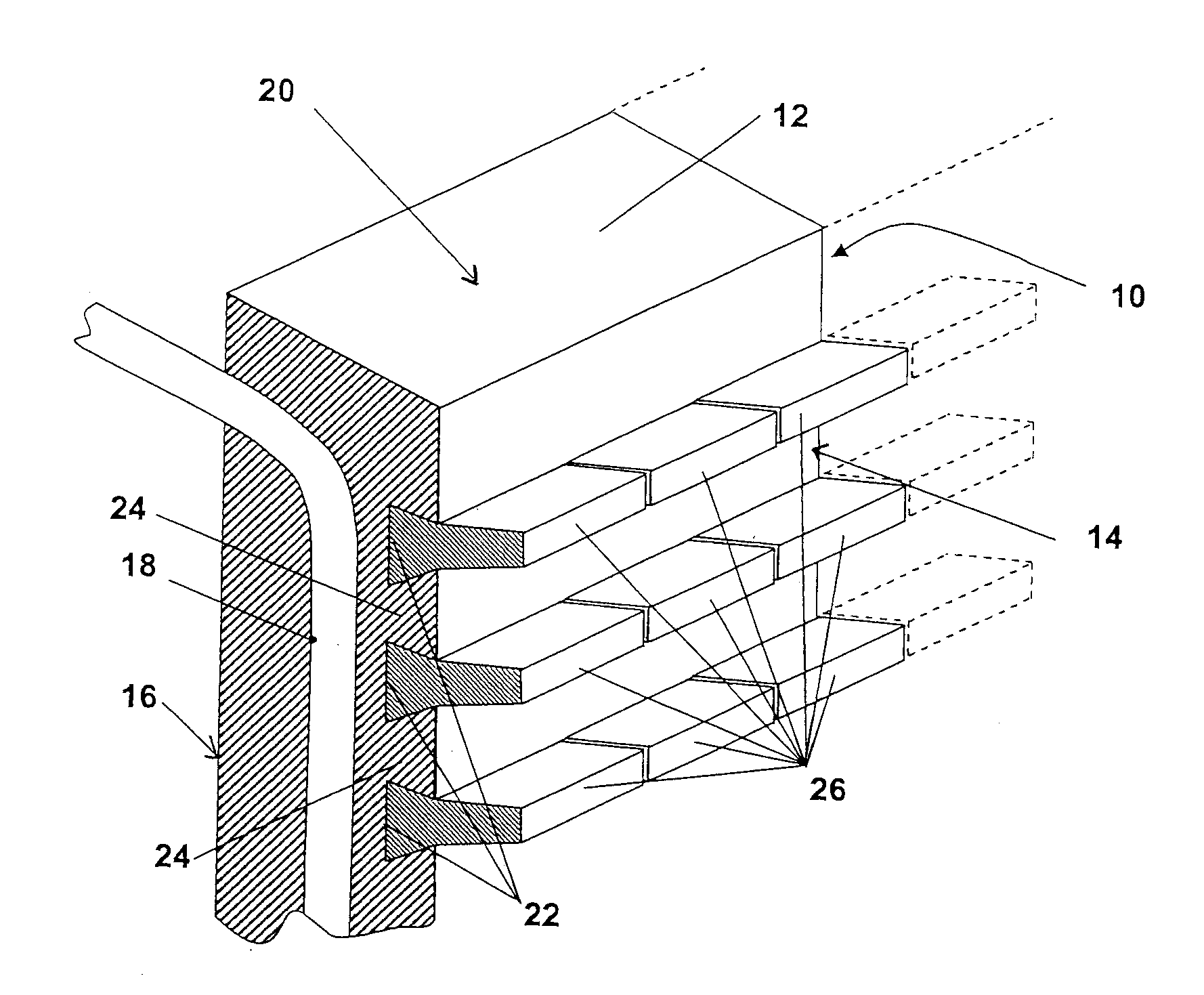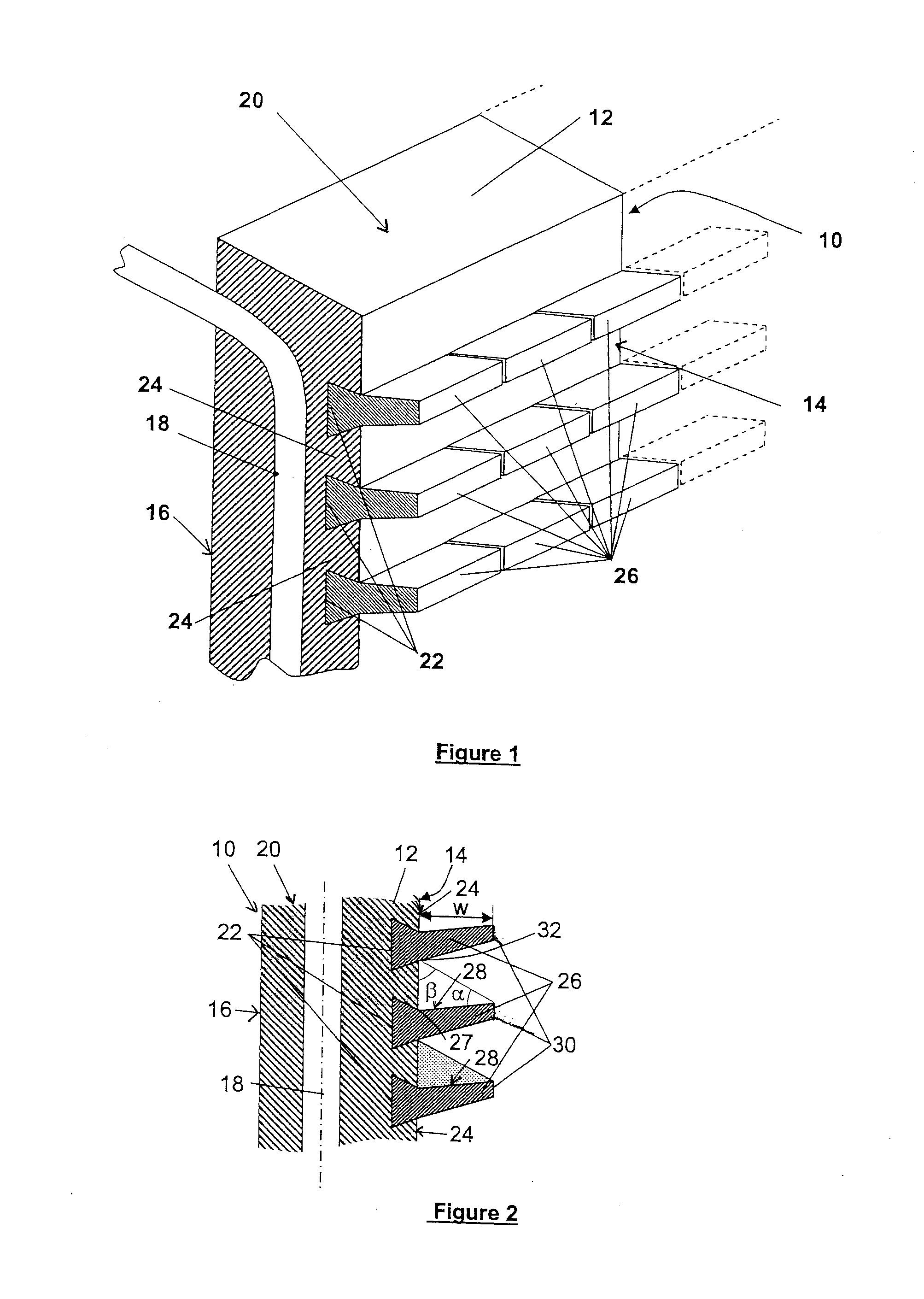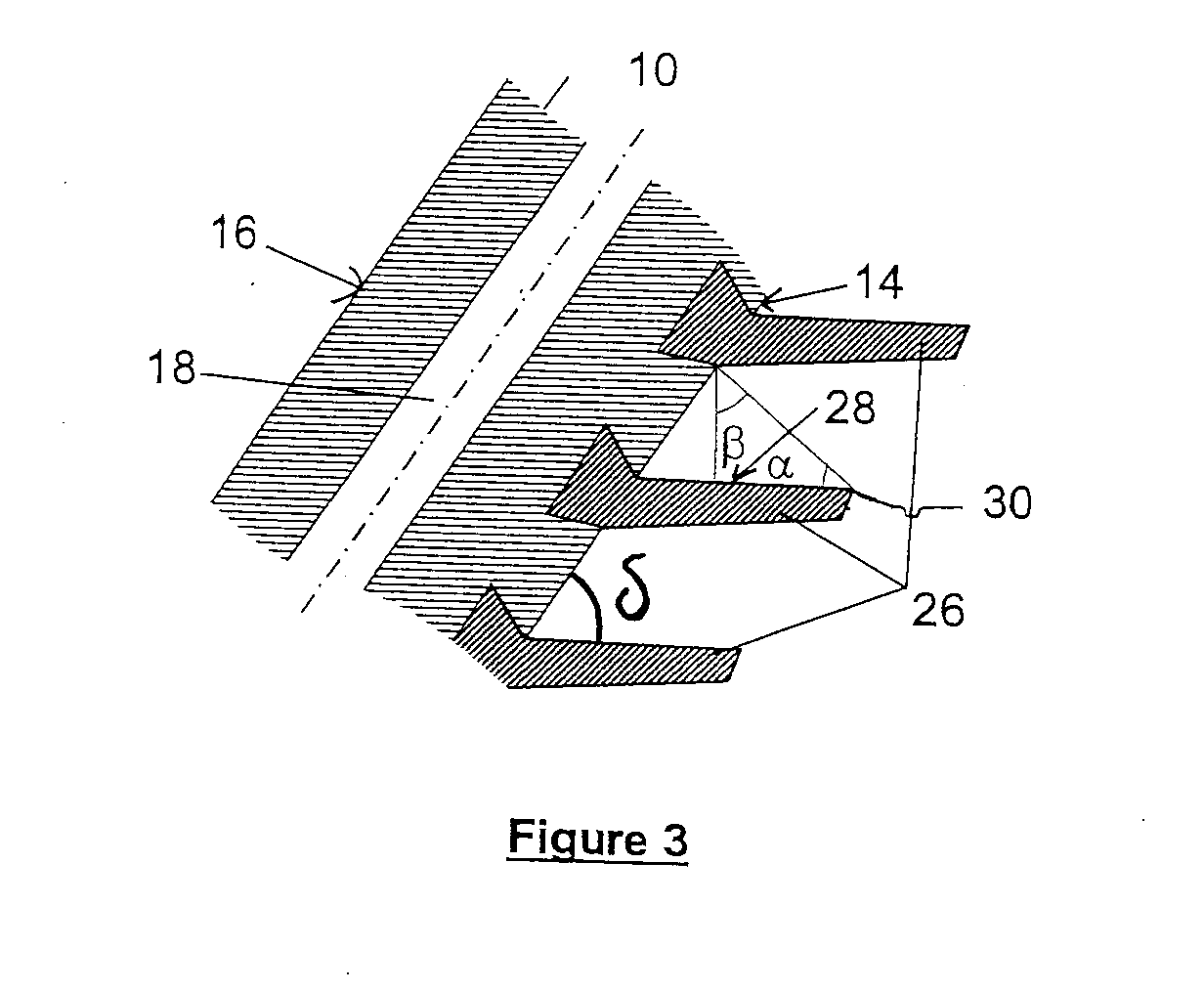Cooling plate for a metallurgical furnace
- Summary
- Abstract
- Description
- Claims
- Application Information
AI Technical Summary
Benefits of technology
Problems solved by technology
Method used
Image
Examples
Embodiment Construction
[0029]A preferred embodiment of the present cooling plate 10 is illustrated in FIGS. 1 and 2. The cooling plate 10 is typically formed from a slab e.g. made of a cast or forged body of copper, copper alloy or steel into a panel-like body 12. This panel-like metallic body 12 has a front face 14, also referred to as hot face, which will be facing the interior of the furnace, and a rear face 16, also referred to as cold face, which will be facing the inner surface of the furnace wall. Conventionally, the panel-like body 12 is of essentially parallelepipedic form. Most modern cooling plates have a width in the range of 600 to 1300 mm and a height in the range of 1000 to 4200 mm. It will however be understood that the height and width of the cooling plate may be adapted, amongst others, to structural conditions of a metallurgical furnace and to constraints resulting from their fabrication process.
[0030]A plurality of coolant channels 18 extend through the body 12 in proximity of the rear...
PUM
| Property | Measurement | Unit |
|---|---|---|
| Angle | aaaaa | aaaaa |
| Angle | aaaaa | aaaaa |
| Angle | aaaaa | aaaaa |
Abstract
Description
Claims
Application Information
 Login to View More
Login to View More - R&D
- Intellectual Property
- Life Sciences
- Materials
- Tech Scout
- Unparalleled Data Quality
- Higher Quality Content
- 60% Fewer Hallucinations
Browse by: Latest US Patents, China's latest patents, Technical Efficacy Thesaurus, Application Domain, Technology Topic, Popular Technical Reports.
© 2025 PatSnap. All rights reserved.Legal|Privacy policy|Modern Slavery Act Transparency Statement|Sitemap|About US| Contact US: help@patsnap.com



